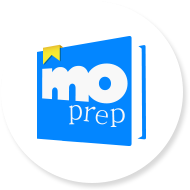Study Like a Tutor
Preparing for finals and AP exams can be difficult enough under regular circumstances, and this year students are also tasked with preparing for them the same way they’ve likely been learning during online classes: primarily by themselves. To avoid getting that night-before-the-test study panic, try out some of the study tactics below our tutors have found useful in both high school and college.
Start by Organizing What You Need to Study
Before you start studying, separate out the most important and relevant information from the course. This will save you study time and help condense the amount of information you’re trying to retain.
Gather all of your material from the course in one place: assignments, lecture notes, textbook chapters, graded tests, and the syllabus.
Go through each category of material (e.g. homework) and ask yourself this question: Is this relevant to the overall goal of the course as outlined in the syllabus and do I think this is information that could be on the exam?
While this seems like a simple strategy, going through the motions of being in the course content while applying the broad approach of the course goal will help you prioritize the information that’s important - while still allowing you to touch base on all of the material covered in the class.
Make a Presentation
Starting with a few blank pieces of paper, write out all of the information you remember on the topics covered in the course. This is just your first draft, so it’s supposed to be a brain dump of all the unfiltered knowledge you have so far.
Now ask yourself: if I were to give a PowerPoint presentation on this course as a whole, which pieces of information would I include?
On your second draft of this “presentation,” and on a new piece of paper, whittle down the talking points into only the most essential information.
Consider the rule of thumb that each slide, or topic, should only have a few short bullet points of text - with the presenter able to verbally explain the finer details of each point.
Your goal with this is to become comfortable enough with the information that you don’t need to see the details written out; a short bullet of text or a practice question is enough for you to explain the topic.
Draw (or write) it out!
Using a whiteboard, presentation tool, or just another piece of paper, make a “final draft” of your presentation.
You now have a comprehensive study guide that you can refer back to, and the process of creating it was your study method!
Teach it
You’ll need a study buddy or a volunteer to help with this study technique. Unsurprisingly, our tutors find teaching others the material one of the best ways to learn it themselves!
Use the course syllabus or study guide to give an outline on the topics to cover.
Have a friend or family member ready to learn, or teach to an empty room; either way, start by going through the material lecture-style.
Would you start by explaining definitions, having them try old practice questions from your class, or with a discussion about the application of a topic? Keep to the most important topics, but make the teaching style your own.
If you have a peer present, let them ask you questions! If you don’t know the answer, work through the solution with them.
Keep track of topics that you struggle with explaining or that you had to review your notes to explain. This will help you identify areas you may need to revisit in future studying.
Split Up Your Study Efforts
If you’re looking for a condensed study plan leading up to your test, this may be the strategy for you. While we don’t recommend cramming for a test the week-of, this strategy is meant to be used as a last-ditch study tool - mainly helping you pinpoint any areas of weakness remaining leading up to your test - used in combination with another study strategy.
This 5-Day study routine should start when you have six days remaining until your exam.
Day 1: Create an outline of topics to review based on the course syllabus and content covered.
Split out the topics into three equal sections, in chronological order.
Section 1: First ⅓ of topics covered.
Section 2: Middle ⅓ of topics covered.
Section 3: Last ⅓ of topics covered.
Day 2: Study Section 1.
At the end of your study session, highlight any topics that you do not feel 100% confident in your understanding.
Day 3: Study Section 2.
At the end of your study session, highlight any topics that you do not feel 100% confident in your understanding.
Day 4: Study Section 3.
At the end of your study session, highlight any topics that you do not feel 100% confident in your understanding.
Day 5: Pick out the highlighted topics from all sections. Focus your studying on these topics only.
Day 6: Take your exam.
Studying over the course of five days will allow you to avoid cramming the night before, an action not often associated with long-term understanding of material.
